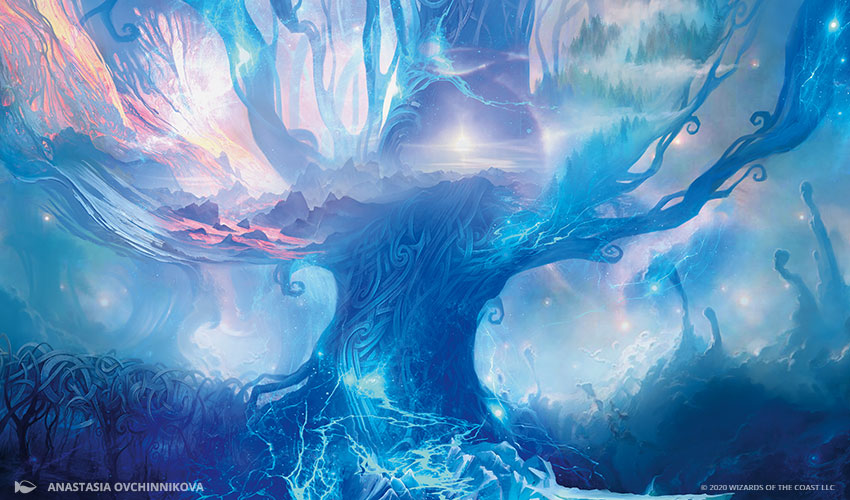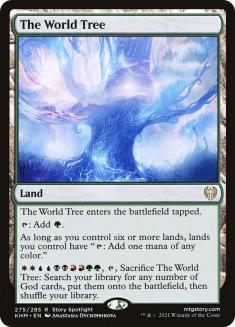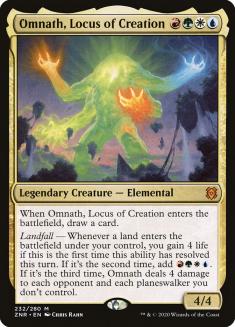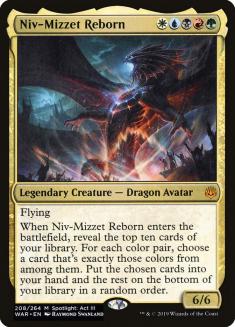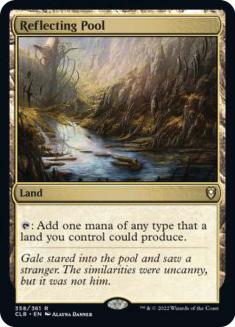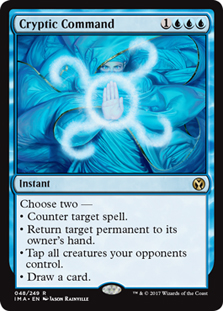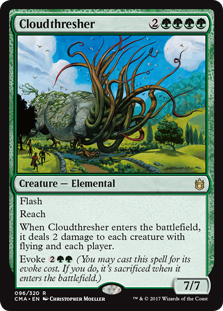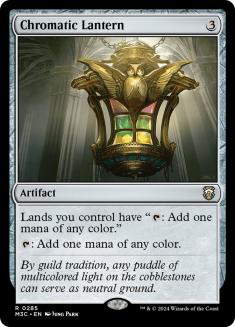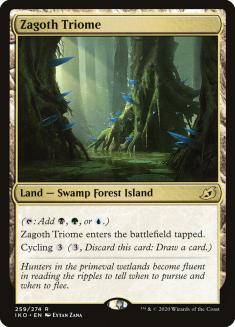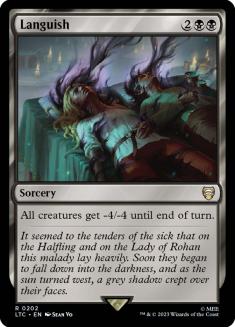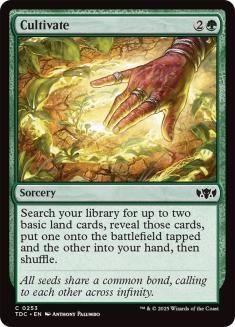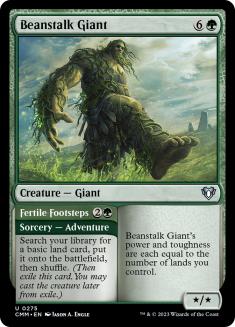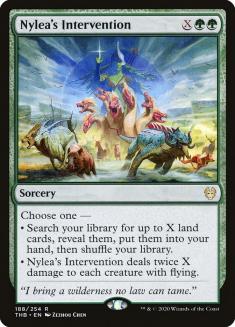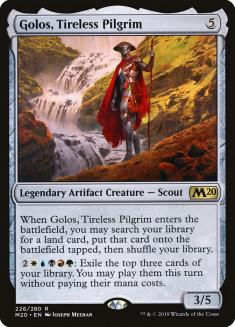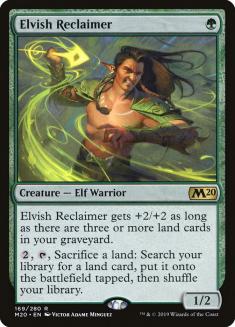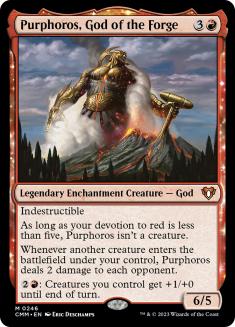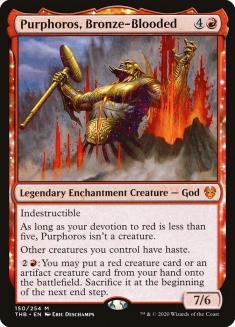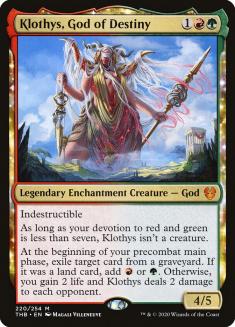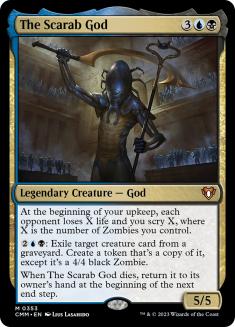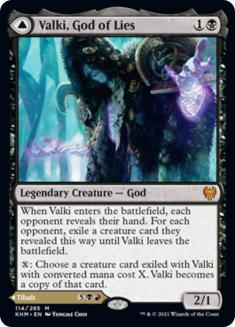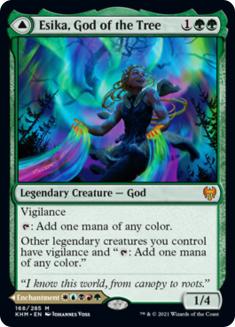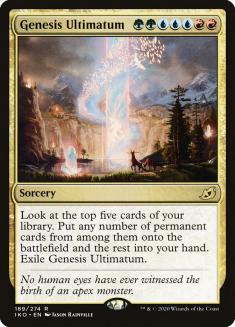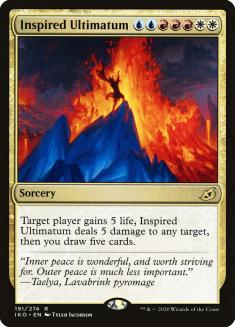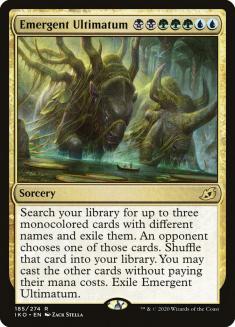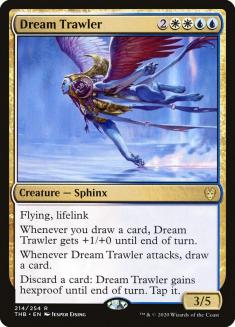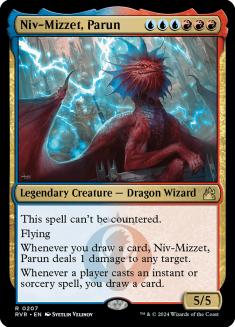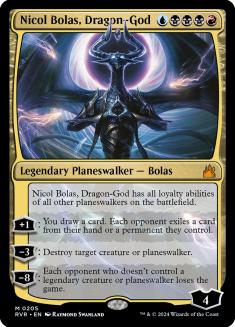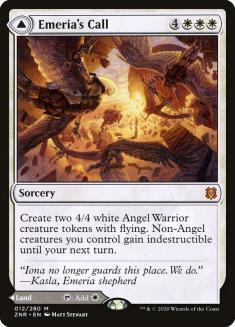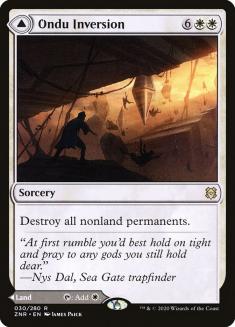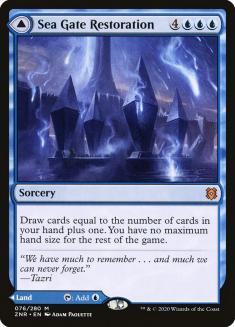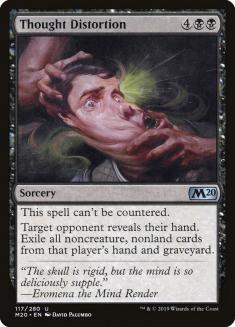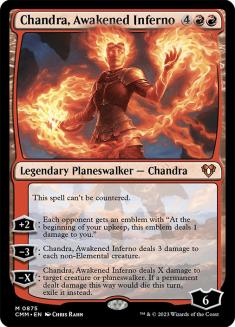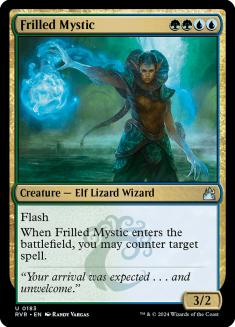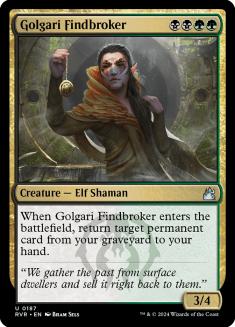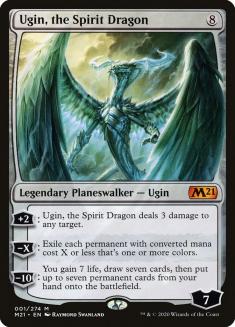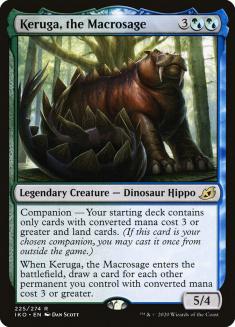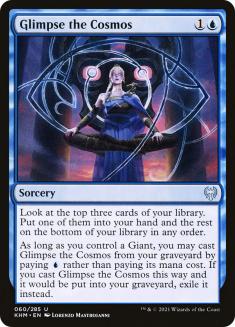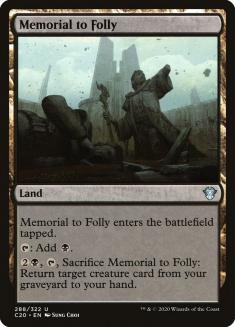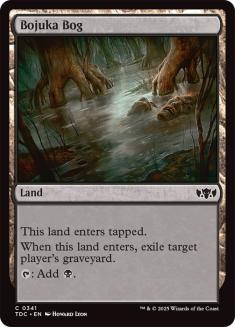It’s me, The Mana Dork™ again, here to talk about another big color-fixing land.
If you follow Todd’s thread down, you see he is pulling a traditional Todd stunt. Yell loud, Roll Tide, details later if anyone yells back. And once you get to the semantics, I agree with his stance.
The World Tree isn’t a Field of the Dead-level land. It probably isn’t even a Ketria Triome-level land. But it’s a unique, non-specific, and low-cost effect, and those are always worth examining.
A Lifetime Supply of Colored Mana
The World Tree’s primary ability is to let you produce any color of mana from your lands. If colored mana isn’t a boundary, what is the best thing you can do?
One of Todd’s referenced issues is that casting Omnath, Locus of Creation and Niv-Mizzet Reborn has been a non-issue across multiple formats without fetchlands. Why do we need better mana than that?
Glad you asked! Part of this is easy: Pathways are especially good at casting cards like Omnath with their costs spread across colors. You don’t want or need The World Tree to cast them. Instead, The World Tree should be casting cards with more color commitments.
Guess what? We already knew this!
Creatures (17)
Lands (24)
Spells (19)

The World Tree isn’t the first time a land has given us free access to all colors of mana. Back in Lorwyn-Shadowmoor Standard, we had access to the Vivid Creek cycle and Reflecting Pool, resulting in absolute nonsense. Notice the color requirements of this deck: double white, triple blue, triple black, double red, quadruple green? Never an issue, and at the event I played this deck, I lost a single game over eight rounds… to a mirror match in the later rounds.
Creatures (6)
Planeswalkers (4)
Lands (27)
Spells (23)
- 1 Door to Nothingness
- 4 Farseek
- 1 Oblivion Ring
- 3 Lingering Souls
- 2 Ranger's Path
- 2 Rakdos's Return
- 2 Chromatic Lantern
- 2 Abrupt Decay
- 3 Supreme Verdict
- 3 Sphinx's Revelation
Sideboard

Chromatic Lantern also gave us this effect, and when it was playable we’ve seen similar results. Triple white, double blue, quadruple black, just a single red I guess, and triple green.
Chromatic Lantern is probably an even better comparison than the Vivid Marsh-era, because your free reign over mana with Chromatic Lantern doesn’t start until later. What you don’t see in the Chromatic Lantern deck is needing heavy color commitments early for cards like Volcanic Fallout. The World Tree decks won’t care about weird costs on the high end, but you should choose a core couple of colors for your interaction.
I haven’t covered all the fixing in Standard yet though. What’s the difference between The World Tree and Triomes?
Triomes are pretty good at stitching together double-color commitments as long as you stick to those three colors, but they start to break down at triple requirements. If you’re looking to build around The World Tree, look for those triple costs or spreads across four or five colors.
It’s also worth repeating something I pointed out in my Pathway article. There aren’t ten Triomes in Standard, so The World Tree can be a key part of getting weird with costs in some three-color combinations where those don’t exist. Dream Trawler and green cards now work, for example.
The other kind of strong fixing in Standard are the green spells, and The World Tree does a couple of things better than those.
You don’t need weird basic lands in your deck in potentially larger quantities with The World Tree. There are no Mountain, Plains opening hands in your Simic deck.
You don’t even need to be green for The World Tree. You can play The World Tree in a deck that has no cheap green cards just because it makes your high end work, but if you put Cultivate in your deck you need to commit a decent amount of lands to green mana.
And you don’t have to tap three mana to do nothing with The World Tree. Cultivate has been terrible in Standard because it’s facing up against Lovestruck Beast and Bonecrusher Giant at the same cost and you just die. Beanstalk Giant is less of a concern there since it effectively “costs” a mana less with the land being untapped, but it’s also only fixing for a single land and isn’t going to do anything real fun.
So the short version: The World Tree supports large commitments to expensive cards across multiple colors. If you just need some double-color stuff early or a spread of single pips across the spectrum, stick to Triomes and Pathways.
The one scary note with The World Tree is that there aren’t a ton of good ways to find The World Tree. Even if it isn’t a legendary land, additional copies of The World Tree aren’t great. Ideally you would play a couple of copies and ways to search those up, but those don’t really exist in Standard. I’m fairly sure drawing Nylea’s Intervention is worse than drawing another The World Tree, so I would only play that if I wanted a fifth copy of the card.
In Historic, the Core Set 2020 cards give you a little better selection and I almost wouldn’t even consider the card without Golos, Tireless Pilgrim. Technically Hour of Promise also lets you find lands, but that card doesn’t have power, toughness, or an insane activated ability. You could already find Cascading Cataracts with Golos, but that land effectively adds an extra mana to an already expensive activated ability where The World Tree doesn’t.
Is This Flavor Text?
Technically there’s another ability on The World Tree. Something about Gods. That’s not the point and it will never be the point.
There are instant kills you could set up, putting a bunch of hasted Gods on the battlefield. Since The World Tree only lets you search your library, that is not a reliable setup. It costs eleven mana to activate that ability, counting tapping the Tree itself; by that point you have drawn too much of your deck for singletons of multiple cards to still be in it. If you start doubling down with multiple copies of the key legends, your deck just becomes bad.
There’s nothing wrong with putting Gods you would actually play into your deck just so you can cash out The World Tree for some value. Even if it’s eleven mana, sometimes you flood out. Even just pre-sideboarding a Klothys, God of Destiny and calling it a day is fine. Just don’t overload your deck with bad cards for no reason.
I might be a bit more excited about this ability if the rules worked a bit differently regarding DFCs, or if The World Tree was worded slightly differently. If you put a DFC onto the battlefield, as occurs with The World Tree’s ability, it always enters the battlefield as the front side. You can’t find Valki, God of Lies and put it onto the battlefield as Tibalt, Cosmic Impostor or find Esika, God of the Tree as The Prismatic Bridge. This is probably a good thing, or Fiend Artisan would be broken beyond belief.
But a fun aside: something that Michael Majors missed in his largely fair and normal examination of Valki, God of Lie is a way you can break this barrier. If an effect tells you to cast a DFC, you can choose either side that meets the requirements of what you’re casting. This sounds weird, but it’s literally a line item in the Zendikar Rising release notes from when they announced the card type. So if you control Lurrus of the Dream-Den, you can only cast the Valki side from your graveyard because Tibalt isn’t a cheap permanent, but if the effect says “cast that card,” all bets are off.
This will come up again later so don’t forget it. Until then, just let your brain wheels spin thinking about Bloodbraid Elf revealing Valki and casting Tibalt.
Pick Your Payoff
So we control The World Tree. What cards are we trying to cast with it?
The obvious answer is Ikoria Ultimatums. They are by far the most color restrictive cards in Standard or even Historic, and they are actually worth casting. Eerie Ultimatum seems better off in a deck more interested in grinding other effects than in a high-power whammies deck that The World Tree promotes, and Ruinous Ultimatum is honestly just not a big enough effect because it doesn’t win the game, but the other three all make sense to cast off The World Tree.
Down the list of extreme color requirements are a couple of multicolor finishers. Dream Trawler is the most likely of these to hit, half because it’s the most 2020 of these cards and half because despite being the most powerful it’s also the easiest to cast when you don’t draw The World Tree.
Another good category to hit up are the Zendikar Rising DFCs. Shaheen, get excited to see more Sea Gate Restoration today than you have seen in the last three months.
Then there’s just some weird, irreplaceable effects. The text “can’t be countered” comes to mind because that both points towards impacting matchups big green decks traditionally need help with and points towards being good in matchups where you have time to sit with an uncastable card in your hand for longer.
I also skimmed the various double-double costed Guilds of Ravnica-era cards, but none stood out as things I care about casting later on. Those cards push you more towards specific manabases that cast them on Turn 4, even if they are also solid late-game plays.
Is any of this better than just casting Ugin, The Spirit Dragon? Honestly, I’m unsure, but it’s certainly worth a look.
Some Lists!
You’re going to see a lot of similar trends across all of these decks: heavy interaction, light ramp, four colors, some Ultimatums, and a spread of high-end. If you think about the things I’ve discussed, this all makes sense.
If you were just going to ramp to a specific card like Genesis Ultimatum, you would just do that and not worry about a bunch of colors. You would just make the colors for that card, cast it, and be done. But in Historic and Standard, none of those cards are assured kills, so instead these decks are set up to grind out some wins with heavy-hitting effects.
Creatures (17)
- 4 Beanstalk Giant
- 4 Bonecrusher Giant
- 4 Realm-Cloaked Giant
- 1 Klothys, God of Destiny
- 2 Dream Trawler
- 1 Esika, God of the Tree
- 1 Koma, Cosmos Serpent
Planeswalkers (2)
Lands (17)
Spells (24)

It’s fairly hard to lose the game after resolving Inspired Ultimatum, but it doesn’t line up well with the ramp that gets you to seven-drops in this format. With The World Tree, that just doesn’t matter anymore.
This deck is close to supporting Keruga, the Macrosage, and back in the full-power companion days I played against similar decks and was impressed. It’s significantly worse at the full eight-mana investment, but having assured access to a big card draw spell is really powerful and lets you build some weirdly skewed decks. You can literally be all interaction, Adventures, Ultimatums, and too many lands, and with Keruga you just have a scripted end-game.
But I think Glimpse the Cosmos might be even better. I’ve got three of the better Adventure creatures in this deck and all of them are Giants. Think about how good casting Bonecrusher Giant is when you control Edgewall Innkeeper, and then think of how much better Anticipate is compared to just drawing a card. I wish there was a way to get Glimpse the Cosmos into your graveyard for some value without casting it, and Teferi, Master of Time isn’t quite it, but just untapping with a Giant and casting the card twice has to be good enough.
Creatures (5)
Planeswalkers (2)
Lands (20)
Spells (33)
- 2 Forest
- 1 Mountain
- 3 Island
- 3 Cultivate
- 1 Kiora Bests the Sea God
- 1 Elspeth's Nightmare
- 1 Boon of the Wish-Giver
- 2 Neutralize
- 3 Shark Typhoon
- 3 Extinction Event
- 1 Heartless Act
- 4 Emergent Ultimatum
- 1 Eliminate
- 2 Mazemind Tome
- 2 Bloodchief's Thirst
- 1 Bala Ged Recovery
- 1 Sea Gate Restoration
- 1 Hagra Mauling
Sideboard

Another deck inspired by things I played against last year, this time some nonsense by Eli Kassis in the full-on Sultai era before rotation. This is a bit less of a The World Tree deck than the last one since the Ultimatum you’re casting is base-green, but that good of a five-color land lets you get away with some nonsense.
Remember that thing I mentioned earlier? Oh yeah, it’s happening.
One of the issues with Eli’s Emergent Ultimatum deck in that era was the same thing I mentioned with The World Tree and Gods. You don’t want to play a ton of expensive monocolored cards to search for, since drawing those cards is typically not great, but you can also just draw those cards and run out of good Ultimatum targets.
But resolving Emergent Ultimatum gets weird, and the condition of being monocolored is searching for the cards and not casting them, which happens later and independently. If you search for the monocolored Valki, you can cast it as Tibalt. The World Tree is a great source for casting Tibalt as Tibalt the normal way, though Valki is a fairly embarrassing God to find late in the game with The World Tree. Maybe this deck wants an Alrund, God of the Cosmos?
Creatures (11)
Planeswalkers (3)
Lands (26)
Spells (22)
- 2 Forest
- 1 Mountain
- 3 Island
- 4 Thoughtseize
- 1 Maelstrom Pulse
- 3 Explore
- 4 Growth Spiral
- 3 Extinction Event
- 1 Sea Gate Restoration
Sideboard

Yet another variant of the best deck in Historic, but leaning heavily into Golos, Tireless Pilgrim as a potential best additional threat that avoids Aether Gust. That might not be the best since Tale’s End seems to be the hot tech these days, but just reducing their raw quantity of good interaction in mirrors does matter.
Playing that many copies of Explore and Growth Spiral probably makes this deck too weak against Narset, Parter of Veils, but that might not be required. I’m just trying to double-ramp to Turn 4 Golos with an extra land so I can untap and activate it, but you might be better off not rushing that quickly.
The Golos suite outside of The World Tree in Historic is pretty good for not having a great creature-land to find, as Crawling Barrens in an Uro, Titan of Nature’s Wrath deck is a stretch. I’m a big fan of Golos for Bojuka Bog to clear opposing Uros, with the rest of the lands being negotiable if efficiency matters.
I’ve elected to play a bunch of proactive interaction to maximize Golos spins. Valki seems really well-positioned for Historic. It answers Muxus, Goblin Grandee and opposing Uro, Titan of Nature’s Wraths; it plays great with all the powerful ramp in the format; and Golos gives you the same option to cast Tibalt that Emergent Ultimatum has.
All of these The World Tree decks falling into the same category points to the overall future of the card in Constructed. It isn’t a broad card and it’s more of a tool than a focal point of a deck. But it’s both unique and low-cost. In terms of designs that enable really fun things to happen in a format without making them overwhelming, few are going to do a better job than The World Tree.

